Epizootic Haemorrhagic Diseases
Ongoing research into Epizootic Hemorrhagic Diseases aims to deepen our understanding of the viruses, their vectors, and the dynamics of disease transmission. Climate change is contributing to the expansion of Culicoides vector habitats, potentially altering the geographical distribution of EHD. The impact of EHD on wildlife populations, particularly in the context of conservation, is an area of increasing concern. Advances in diagnostic tools, including molecular techniques and serological assays, enhance our ability to detect and differentiate EHD viruses. Genomic studies provide insights into the genetic diversity of EHD viruses and aid in the development of diagnostic tests and vaccines. Collaborative efforts between veterinary and wildlife health professionals are essential for comprehensive disease surveillance and control. The One Health approach, integrating human, animal, and environmental health, is crucial for managing EHD and mitigating its impact on both domestic and wild ruminant populations.

Francis J Castellino
University of Notre Dame, United States
Ranjan Ramasamy
ID-FISH Technology, United States
Saurabh Chattopadhyay
University of Kentucky College of Medicine, United States
Rico Leonardo Lizbinski
Northern Light Health, United States
Sasha Leibholz
New York Presbyterian Columbia/Cornell, United States
Lauren Gruffi
New York Presbyterian Columbia/Cornell, United States



Title : Pathogen-derived noncanonical epitopes: Are they valuable targets for novel vaccinations and shall we be concerned about autoimmune responses?
Michele Mishto, Francis Crick Institute, United Kingdom
Title : Bioterrorism through the ages: Historical perspective, emerging threats, and medical countermeasures
Claudia Ferreira, Sorbonne University, France
Title : Changing population immunity to COVID-19 in the context of infection, vaccination, and emerging SARS-CoV-2 variants
Ranjan Ramasamy, ID-FISH Technology, United States
Title : Extensively drug-resistant bacterial infections: Confronting a global crisis with urgent solutions in prevention, surveillance, and treatment
Yazdan Mirzanejad, University of British Columbia, Canada
Title : Measles vaccination coverage indicators in 2023 and advance towards measles elimination and eradication by 2030
Pedro Plans Rubio, College of Physicians of Barcelona, Spain
Title : Severe influenza and other related respiratory infection cases during Omicron era in Japan
Masafumi Seki, Saitama Medical University International Medical Center, Japan